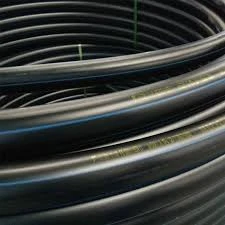Dec . 03, 2024 16:43 Back to list
1-inch PVC irrigation pipe for efficient water delivery and garden systems
Utilizing 1 Inch PVC Irrigation Pipe for Efficient Water Management
Water management is an essential aspect of agriculture and landscaping, and the choice of irrigation systems can significantly impact the efficiency and sustainability of water use. One of the most versatile and widely used materials for irrigation systems is the PVC (Polyvinyl Chloride) pipe. Among various sizes available, the 1 inch PVC irrigation pipe has gained popularity due to its ideal balance between durability, flexibility, and cost-effectiveness.
Advantages of PVC Pipes in Irrigation
1. Durability PVC pipes are resistant to corrosion, rust, and chemical reactions, making them an excellent choice for agricultural applications where they may be exposed to various substances. The long lifespan of PVC pipes ensures that system maintenance is minimized, allowing farmers and landscapers to focus more on their work rather than on irrigation repairs.
2. Lightweight and Flexible The lightweight nature of PVC pipes is a significant advantage during installation. It allows for easy transport, manipulation, and installation, reducing labor costs and time. Moreover, PVC pipes can withstand considerable pressure while maintaining flexibility, making them suitable for various irrigation designs, including drip, sprinkler, and surface irrigation systems.
3. Cost-Effectiveness When considering the overall cost of an irrigation system, PVC pipes, especially the 1 inch variety, are often more affordable than other materials like metal or concrete. Their low initial investment is complemented by lower maintenance and replacement costs, providing a long-term solution for effective water management.
4. Low Friction Loss The smooth interior surface of PVC pipes minimizes friction loss, allowing water to flow freely with minimal energy required. This feature is particularly important in irrigation systems, where efficiency in water delivery can directly impact crop yields and growth.
Applications of 1 Inch PVC Irrigation Pipe
The 1 inch PVC irrigation pipe is ideal for various applications, including
- Drip Irrigation This method targets water delivery directly to the plant roots, using less water than traditional methods. The 1 inch PVC pipe can be used to transport water from a central line to individual drippers, optimizing water usage.
1 inch pvc irrigation pipe

- Sprinkler Systems In larger agricultural fields or lawns, the 1 inch PVC pipe can serve as main lines or lateral lines in sprinkler watering systems, effectively covering broad areas while ensuring uniform water distribution.
- Surface Irrigation For crops requiring flood irrigation, these pipes can help in controlling water flows in furrows or basins, ensuring that water reaches the plants efficiently
.Installation Tips
To ensure the longevity and effectiveness of a 1 inch PVC irrigation system, proper installation is crucial. Here are some tips for successful installation
1. Site Preparation Before installing the pipes, clear the area of any obstructions and level the ground to create a smooth workspace.
2. Correct Cutting Use a proper PVC pipe cutter to achieve clean cuts. This will ensure that the fittings assemble correctly and reduce the risk of leaks.
3. Glue Application When joining pipes and fittings, it is essential to use high-quality PVC cement. Apply the cement evenly to both the pipe and the fitting to ensure a strong bond.
4. Pressure Testing Once the system is set up, conduct a pressure test to check for leaks and ensure that the system can handle the desired water pressure.
Conclusion
The 1 inch PVC irrigation pipe is a remarkable solution in modern irrigation practices, combining durability, cost-effectiveness, and efficiency. Its unique properties make it suitable for various applications, from small gardens to large agricultural fields. As the demand for sustainable and efficient water management continues to grow, PVC pipes will remain a cornerstone in optimizing irrigation systems worldwide. By investing in quality materials and adhering to best practices for installation, growers can enhance their productivity and contribute to sustainable agricultural practices.
-
High-Quality PPR Pipes and Fittings Durable ERA PPR & PVC PPR Solutions
NewsJul.08,2025
-
Black HDPE Cutting Board - Durable, Non-Porous & Food Safe HDPE Plastic Cutting Board
NewsJul.08,2025
-
High-Quality CPVC Panel Durable HDPE & PVC Panels Supplier
NewsJul.08,2025
-
Double PE Welding Rod Supplier - High Strength, Durable & Versatile Welding Solutions
NewsJul.07,2025
-
High-Quality PVC-O Pipe Supplier Durable 75mm PVC Pipe & Connections Leading PVC Pipe Company
NewsJul.07,2025
-
HDPE Drainage Pipe Supplier – Durable & Corrosion-Resistant Solutions
NewsJul.06,2025

